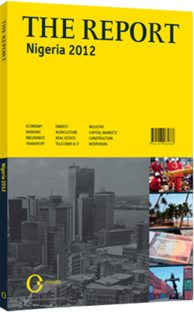Lafarge Cement WAPCO Nigeria: Building materials
THE COMPANY: Lafarge Cement WAPCO Nigeria has leveraged its manufacturing heritage to become a significant strategic player in the building materials sector. Created in 1833, Lafarge is a global industry leader, with top-ranking positions in all of its businesses: cement, aggregates and concrete, and gypsum. Having acquired West African Portland Cement (WAPCO), AshakaCem, Atlas Cement, as well as a substantial stake in Unicem, Lafarge dominates the Nigerian cement industry, overseeing companies with a total production capacity of about 8.5m tonnes per annum. The Lafarge cement division maintains a significant presence in 20 African countries that are strategically located with facilities for exports to other African nations.
1Q12 RESULTS ANALYSIS: Lafarge has historically demonstrated strong and stable earnings growth, a trend it expects to maintain in 2012 and beyond. This has been driven by volume growth and robust margins spurred by the premium pricing on the company’s brands. 1Q12 results sustain the successive fiscal year (FY) 2011 growth pattern, and expectations for the near term are high. Revenues in 1Q12 were N22.6bn ($144.6m), up from N14.2bn ($90.9m) in 1Q11. Pre- and post-tax profit growth were both impressive at 185% and 151%, respectively. The profit before taxes and profit after taxes margins came in at 26% and 18%, compared to 14% and 11%, respectively, in 1Q11.
Of note is that in capacity utilisation of the new plant, Lakatabu, income from Lafarge Ready Mix subsidiary and gains in cost efficiency initiatives positively affected revenues and profitability. Lafarge’s balance sheet position continues to see growth as net assets increased 16% in FY11 to N56.05bn ($358.7m). With trailing earnings per share now at N2.83 ($0.018) and trailing price-to-earnings ratio and book value per share standing at 14.4X and N18.68 ($0.12), respectively, Lafarge presents a 54% upside to current market valuation.
DEVELOPMENT STRATEGY: The company’s development strategy is to scale up earnings and profitability via: greater capacity expansion, innovation, product differentiation, supply chain efficiency and investment in alternative energies. From these reforms Lafarge stands to enjoy high value creation in the near term. In 2011 overall domestic demand for cement grew approximately 8% on 15.8m tonnes estimated for 2010. Furthermore, Nigeria’s housing deficit is believed to have reached about 18m units, and infrastructural deficits and the demand for good road networks have been on the rise. It is projected that only about 30% of the existing road network is paved, compared to the 63% average in emerging countries.
Lafarge’s increased capacity with the completion of the Lakatabu plant positions the company to benefit from these prospects, as the facility ramps up the firm’s ability to meet future cement demand. The new plant brings Lafarge’s total capacity to 4.5m tonnes per annum. Turnover for FY11 increased by 42% to N62.2bn ($398.1m) on account of a 37% increase in the volume of cement dispatches for the year, compared with 1.6m tonnes recorded in 2010. Thus, projections for growing volumes and widening margins suggest that Lafarge can easily maintain the trend in 2012.
Management’s innovative efforts through research and development have continued to position Lafarge as a significant player in the building materials sector.
The company is the only producer with multiple cement options. In addition to the main Elephant Cement for building material, the company recently introduced a new product, Elephant Supaset Cement – pre-cast for the hollow block and concrete pole of the construction industry. Lafarge has also gained a reputation for being the first manufacturer to introduce the 42. 5-force cement that is used in concrete pole and high-rise construction. These change efforts have been the key value drivers of revenue and profitability. However, a number of competitive threats coming in from its competitor, Dangote Cement, following Dangote’s aggressive capacity expansion. Nevertheless, Lafarge maintains a positive outlook profile given its strong capacity for continuous improvement in performance.
You have reached the limit of premium articles you can view for free.
Choose from the options below to purchase print or digital editions of our Reports. You can also purchase a website subscription giving you unlimited access to all of our Reports online for 12 months.
If you have already purchased this Report or have a website subscription, please login to continue.

